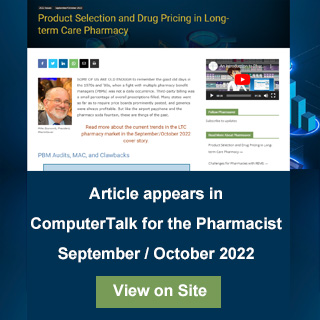Some of us are old enough to remember the good old days in the 1970s and '80s, when a fight with multiple pharmacy benefit managers (PBMs) was not a daily occurrence. Third-party billing was a small percentage of overall prescriptions filled. Many states went so far as to require price boards prominently posted, and generics were always profitable. But like the airport payphone and the pharmacy soda fountain, these are things of the past.

The world today is PBM driven. MAC's, audits and claw-backs are todays reality. However, usual and customary still plays a role. To the PBM commercial plans it functions as a tool to prevent pharmacies from undercutting high tiered co-pays. Long Term Care pharmacies, by virtue of varied patient payers still regularly use usual and customary, and it often becomes an important part of pricing and negotiation with nursing home owners and operators to determine charges for their Part A patients.
Usual and Customary on branded pharmaceuticals is straightforward. Generics is where there can be tremendous variations. For multisource generics, pricing and discounts can be significant. But, what about single or limited source generics where pricing in many cases is much higher. For multisource generics usual and customary discounts on AWP can be as high as 80% or more. This is not the case with limited source generics.
The challenge for Long Term Care pharmacies is both identifying and documenting products availability in the marketplace. A drug look up in standard drug reference like from Medispan or First Data can yield a long list of products. This list will include all registered products regardless of availability. Many products, by virtue of manufacturer discontinuations, manufacturing and supply chain issues and many other market factors may be unavailable for extended periods of time. While this can impact market pricing, if a pharmacy operator cannot identify these or not have access to this information it can be very costly. The ability to monitor, on a timely basis, product status and availability can have a significant impact on billing and profitability.
Long Term Care pharmacies now have access to a product that for many years was only available to manufacturers. PMChek.com provides a wide range of market analytics, market share information, average market pricing and trend analysis to mention a few. Of particular interest to LTC pharmacies is a customizable report that identifies all products that have availability by the same generic equivalency and number of active manufacturers.
By virtue of feeds from numerous wholesale/distribution channels an accurate picture of market availability is assured.
In closing, the need to maintain usual and customary is an important component in assuring ongoing PBM reimbursement and avoiding pricing disputes and claw-backs. In some instances though, like Part A patients in skilled facilities, it can actually be a profit driver.
Mike Sosnowik, President, PharmSaver